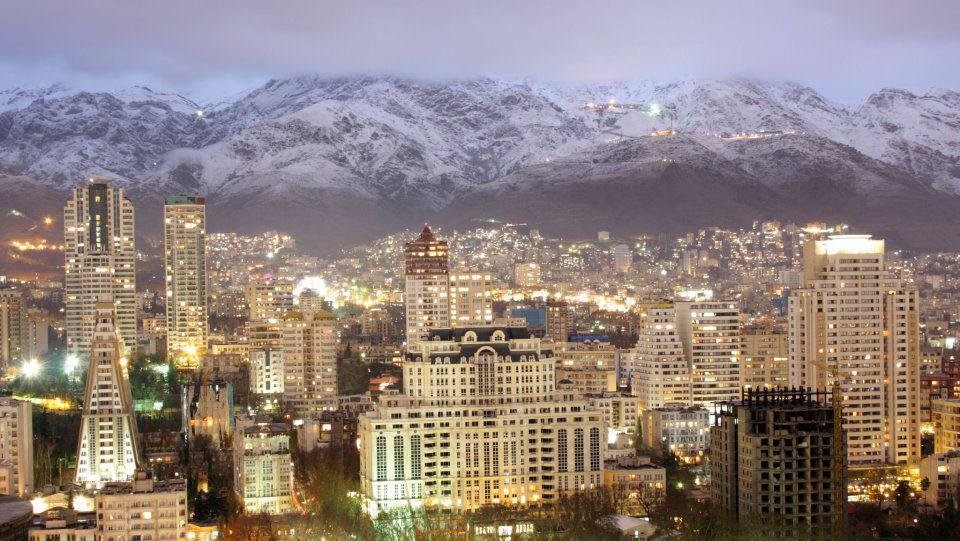Iran Fast Facts
Iran is a republic in Central Asia, sharing a border with seven countries: Afghanistan, Armenia, Azerbaijan, Pakistan, Iraq, Turkey, and Turkmenistan. It has been officially known as the Islamic Republic of Iran since the overthrow of the Shah in 1979. Iran is a Shiite Muslim country, but the majority of its people are Persian, not Arab.
About Iran:
(from the CIA World Factbook)
Area: 1,648,195 sq km, slightly smaller than Alaska
Population: 81,824,270 (July 2015 est.)
Median Age: 28.8 years
Capital: Tehran
Ethnic Groups: Persian 61%, Azeri 16%, Kurd 10%, Lur 6%, Baloch 2%, Arab 2%, Turkmen and Turkic tribes 2%, other 1%
Religion: Muslim (official) 99.4% (Shia 90-95%, Sunni 5-10%), other (includes Zoroastrian, Jewish, and Christian) 0.3%, unspecified 0.4% (2011 est.)
GDP: $1.357 trillion (2014 est.)
GDP Per Capita: $17,400 (2014 est.)
Unemployment: 10.3% (2014 est.)
Other Facts:
The name Iran means “land of the Aryans.”
Before the 1930s, Iran was known as Persia to outsiders.
Iran and the United States have not had diplomatic relations since 1980.
Officially designated a state sponsor of terrorism by the U.S. government.
Timeline:
1921 – Officer Reza Khan stages a coup and takes control of the military.
1925 – Khan has himself crowned Reza Shah Pahlavi.
1939 – During World War II, Reza Shah aligns Iran with Nazi Germany.
1941 – Allied forces invade Iran and force Reza Shah to abdicate in favor of his 21-year-old son Mohammad Reza Shah Pahlavi.
1951 – Prime Minister Mohammad Mosaddeq orchestrates passage of a bill in Iran’s parliament which nationalizes British oil fields in Iran.
1953 – The Shah is forced to abdicate by the supporters of Mosaddeq. However, within days, Great Britain and the United States back a coup that returns the Shah to power.
1963 – The Shah forces cleric Ayatollah Ruhollah Khomeini, a critic of his modernization plans, into exile.
October 1971 – The Shah hosts an elaborate party, costing tens of millions of dollars, to celebrate the 2,500th anniversary of the Persian Empire.
January 16, 1979 – After months of riots, protests and unrest, Shah Reza Pahlavi leaves Iran, in what is described as a vacation, but is generally understood to be permanent exile.
February 1, 1979 – Ayatollah Ruhollah Khomeini returns to Iran from exile in France. After his supporters overthrow the government of Premier Shahpur Bakhtiar, Khomeini becomes the Supreme Leader of Iran.
April 1, 1979 – The country is renamed the Islamic Republic of Iran.
October 22, 1979 – The Shah arrives in the United States for treatment of lymphatic cancer.
November 4, 1979 – Iranian revolutionaries seize control of the U.S. embassy in Tehran and take 66 embassy workers hostage. They demand the extradition of the Shah from the United States in exchange for the hostages. Thirteen of the hostages are released within two weeks, and one is released later for medical reasons. The other 52 spend a total of 444 days in captivity.
April 1980 – An attempt by U.S. airborne forces to rescue the hostages fails, killing eight U.S. service members.
July 27, 1980 – The Shah dies in Cairo, Egypt.
September 22, 1980 – Iraq invades Iran, starting an eight year war. Hundreds of thousands of people are killed on both sides. The war ends in 1988 in a cease-fire, with no clear victor. A formal peace agreement is signed in August 1990.
January 20, 1981 – The remaining 52 U.S. hostages are released.
June 3, 1989 – Ayatollah Ruhollah Khomeini dies.
June 1989 – Seyyed Ali Khamenei becomes Supreme Leader of Iran.
July 28, 1989 – Hashemi Rafsanjani is elected president of Iran.
May 1997 – Mohammad Khatami, a reformist, is elected to the office of president.
June 2001 – Khatami is re-elected as president of Iran.
November 2003 – The International Atomic Energy Agency reports that Iran has been secretly manufacturing small amounts of uranium and plutonium for two decades.
June 2005 – Mahmoud Ahmadinejad, mayor of Tehran, is elected president of Iran.
June 12, 2009 – In a highly controversial election, Mahmoud Ahmadinejad wins re-election with 62.63% of the vote, according to Iranian government sources. His nearest rival, Mir Hossein Moussavi, receives 33.75% of the vote.
June 2009 – Demonstrations take place in Tehran, protesting the outcome of the election. Dozens of people are reported killed.
June 30, 2009 – Despite widespread unrest the re-election of Mahmoud Ahmadinejad is formally certified by the Council of Guardians.
August 5, 2009 – Ahmadinejad is sworn-in for a second term.
February 13, 2011 – In reaction to the anti-government protests spreading throughout the Arab world, demonstrations break out in major Iranian cities and are met with reportedly brutal force by security officers.
February 22, 2011 – Two Iranian warships pass through the Suez Canal, the first such ships to sail through the Canal since the 1979 revolution.
November 29, 2011 – Hundreds of Iranian protesters storm Great Britain’s embassy and a separate diplomatic compound in Tehran. The next day, Great Britain evacuates all embassy staff in Iran and orders that Iran immediately close its embassy in London.
December 1, 2011 – European Union foreign ministers agree to impose sanctions on Iranian firms and individuals in response to protesters storming the British Embassy in Tehran. Italy withdraws its ambassador.
December 1, 2011 – The U.S. Senate passes economic sanctions against Iran.
January 23, 2012 – The European Union announces it will ban the import of Iranian crude oil and petroleum products.
February 19, 2012 – Iran’s oil ministry says that it has suspended crude exports to British and French companies, days after Iran threatened to cut oil exports to some European Union countries in retaliation for sanctions.
March 30, 2012 – President Barack Obama announces that the United States will implement previously announced sanctions that could significantly cut sales of Iranian oil.
July 1, 2012 – The European Union embargo on Iranian oil takes effect.
October 3, 2012 – Demonstrators in Tehran launch protests against President Ahmadinejad, blaming him for the rapidly falling value of Iran’s currency.
June 14, 2013 – Hassan Rouhani wins the presidential election after securing 50.7% of the 36.7 million votes cast. Mahmoud Ahmadinejad was not eligible to run, due to term limits. Rouhani is sworn in August 4.
September 27, 2013 – President Rouhani and President Obama speak by phone, the first direct conversation between leaders of Iran and the United States since 1979.
November 24, 2013 – Six world powers and Iran reach a six-month agreement over Iran’s nuclear program. The deal calls on Iran to limit its nuclear activities in return for lighter sanctions.
November 24, 2014 – The deadline for a final nuclear agreement between Iran and the U.N. Security Council’s P5+1 countries (the United States, Russia, China, France, Britain and Germany) has been set for July 1, 2015.
April 2, 2015 – Negotiators from Iran, the United States, China, Germany, France, Britain and Russia reach a framework for an agreement on Iran’s nuclear capabilities, which includes reducing its stockpile of low-enriched uranium by 98%.
April 9, 2015 – Iranian President Hassan Rouhani announces that Iran will only sign a final nuclear agreement if economic sanctions are lifted on the first day of implementation.
July 14, 2015 – The United States and Iran reach a nuclear deal during a final meeting in Vienna.
January 4, 2016 – Two days after the execution of a prominent Shiite cleric in Saudi Arabia and an attack on the Saudi Embassy in Tehran, Saudi Arabia severs diplomatic ties with Iran. United Arab Emirates, Bahrain, and Sudan also sever or downgrade diplomatic ties with Iran.
TM & © 2016 Cable News Network, Inc., a Time Warner Company. All rights reserved.
Published on KBZK.com





